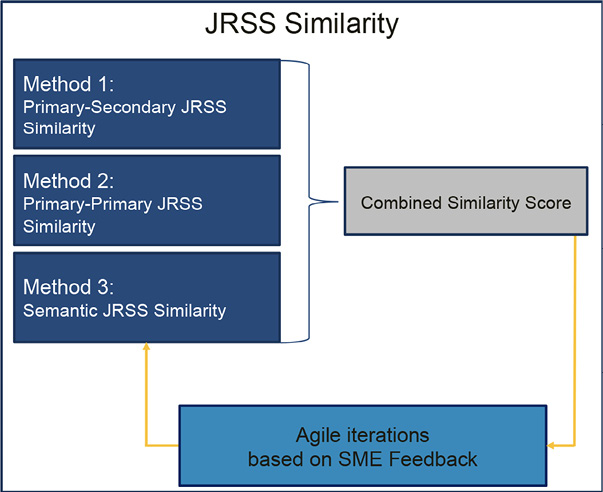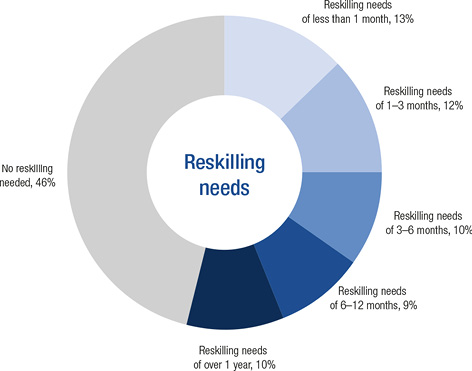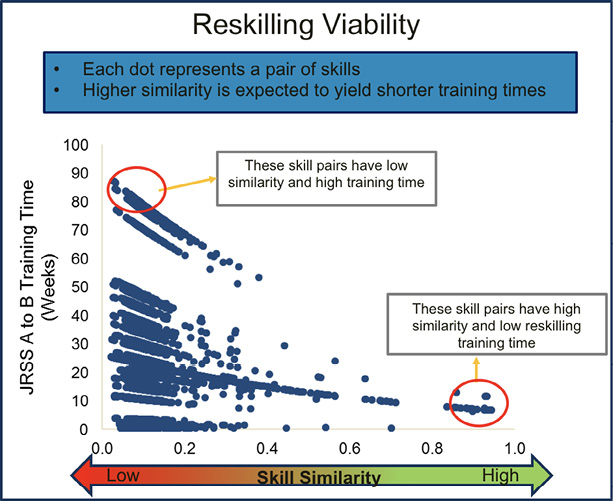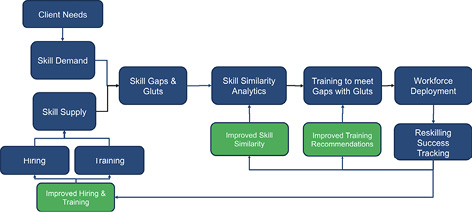Pankaj Srivastava
Abstract
The fear that AI is going to displace many jobs is a popular theme in the media. Past waves of technological changes brought on by industrialization and computerization raised similar concerns. In each case, while there was some turmoil in the short term, there was net growth of employment in the long term as new jobs were created. What’s especially true for this revolution is that AI is broad and powerful enough to address the very impact it is creating on jobs and careers of employees today. In this chapter, we discuss how machine learning and natural language processing can help address reskilling needs of organizations and support workers’ needs. The approach relies on applying rigorous and comprehensive skill taxonomies, quantifying skill adjacency, prescribing optimal training actions and managing skill across the workforce. The approach can be a useful complement to talent management needs of organizations and the career development needs of workers.
Keywords
AI; reskilling; industrialization; jobs; career; professional skills; workers
Acknowledgments
I would like to acknowledge members of my team at IBM Chief Analytics Office that have contributed to developing the approaches described in this chapter especially Brian Johnston, Jonathan Debusk and Michael Peran.
Introduction: Business Imperative
The fear that AI is going to displace many jobs is a popular theme in the media. Almost on a daily basis, we come across news articles that suggest that automation and AI will displace many workers in the future. Ongoing technological advances such as self-driving cars, self-service stores without any cashiers, and so on, are stoking this fear. What is often not reported is that this type of displacement is hardly a new phenomenon. Past waves of technological changes brought on by industrialization and computerization raised similar concerns. History has shown us that each technological wave, while creating some disruption initially, has eventually paved the way for creating far more new jobs as well.
What’s especially true for the AI revolution is that it can also be used in a positive way to serve the corporate and societal need for helping the workers that are impacted by it. By combining the evolving science of skill analytics and natural language understanding (NLU), we can create AI-based systems that can help workers whose skills are declining in demand and retrain them with the skills that are growing in demand in a most cost-efficient manner.
This chapter will cover approaches that are proving to be successful by applying rigorous and comprehensive skill taxonomies, measuring skill adjacency, prescribing optimal training actions, and managing skill across the workforce.
Skill Similarity
Any analytical approach has to start with a foundation in data. In this case, employees have to be categorized in terms of their skills in a structured taxonomy. While many employers have some type of classification for each type of corporate function, such as “sales” or “marketing,” what is needed is a more comprehensive system that classifies each employee into a specific “skill.” These skills can be aggregated into higher level categories such as “job roles.” Since each employee can have multiple skills, it is possible to have primary, secondary, and even tertiary skills defined and stored in a comprehensive HR database. Also, each of these “job roles” and “skills” need to have a textual description that describes them. When thousands of employees have been classified like this, it serves as a great foundation for developing a sophisticated approach to managing an inventory of skills and addressing demand/supply of skills. Since employees have multiple skills, the skill taxonomy can be used to designate “primary skill” and “secondary skill” for each employee.
When a particular skill that is needed to fill demand from clients, workforce managers have to determine whether employees with that skill are available. If they are not available, then the next best option is to see if employees with “similar” skills are available and can be quickly trained to perform the needed function. But how do we determine if a skill A is “similar” to a skill B?
At IBM, we developed an approach shown in Figure 4.1 where we combined three criteria to quantify the distance between skills so we can develop a method for measuring skill similarity.

Figure 4.1 Job role—Skill set (JRSS) similarity approach
- The first criterion considers the extent to which there is “co-occurrence” of pairs of skills as primary/secondary skills in the employee population. In other words, if skill A is often found to be present along with skill B (regardless of whether it is primary or secondary skill), then we can conclude that A and B are fairly similar.
- The second criterion considers the extent to which employees have transitioned from one skill to another over time. If many people have transitioned between a pair of skills, then we can conclude that they are likely to be more similar than a pair of skills that have never seen anyone transition from one to the other.
- The third criterion is based on the similarity of the textual descriptions of each pair of skills, which can be gleaned by applying NLP techniques. We established weights for each criterion and then tested the system by reviewing results with skill management experts to establish the validity of the skill similarity system. The system produced a “skill similarity index” value between 0 and 1 for any pair of skills.
Reskilling as a Service
Management executives are used to thinking of their business as a portfolio of products and services serving their clients. In a similar way, in the knowledge economy, management can also see their workforce as a portfolio of skills serving their clients. When they look ahead, as their business evolves, so will the need for various skills. A recent survey conducted by the World Economic Forum showed that on average 54 percent of employees will need to be reskilled to some extent over the 2018 to 2022 period (Figure 4.2).

Figure 4.2 Expected average reskilling needs across companies, by share of employees, 2018–2022
Source: World Economic Forum report on Future of Jobs, 2018.
Invariably, some skills may be in short supply within the company while other skills are in abundance. Filling the needs for skills in short supply through hiring is time consuming and expensive. It’s much more effective to reskill existing employees and even subcontractors to meet demand. It’s usually not practical to assume that every type of demand can be met through skilling but deciding exactly which ones can be met is challenging. It is especially difficult when the number of people to be reskilled is large and across a wide range of skills.
We have addressed this problem by combining skill similarity with training data to create training programs that address the needs to train workers for each skill. We take the employees that have skills in surplus and use Skill Similarity to determine which employees can be reskilled to perform the skills that are in high demand. While doing this, we take into account the training time that is needed to reskill the employee. HR learning programs provide the training time for a wide range of reskilling options. When the business starts implementing this on a continuous basis, the system starts learning from the success or failure of the reskilling process. The extent of reskill training time that is estimated early on gets refined as well. Figure 4.3 illustrates this idea showing groups of skill pairs where reskilling is viable as well as those where reskilling may not be viable because the training time required is too high.

Figure 4.3 Approach to determine reskilling viability
This system needs to incorporate financial outcomes as well. By including estimated cost to hire or exit employees, the system can be trained to recommend the degree of skill similarity and the extent of retraining that should be accommodated to be financially beneficial. Figure 4.4 illustrates such a system. Client needs drive skill demand, which can evolve over time. Supply of skills is driven by hiring and ongoing training of employees. Quantified demand and supply are used to establish skill gaps and gluts. The skill similarity approach described earlier in Figure 4.1 is combined with training time as shown in Figure 4.3 to determine which employees should be reskilled to meet demand. After these employees are trained and deployment, the system’s success has be measured in terms of effectiveness of the employees who were reskilled. The extent of success can be used to further influence skill similarity, training time viability, and ultimately hiring and training of employees.

Figure 4.4 Workforce management system with reskilling
Conclusions
In this chapter, we discussed how machine learning and natural language processing can help address reskilling needs of organizations and support workers’ needs. The approach relies on applying rigorous and comprehensive skill taxonomies, quantifying skill adjacency, prescribing optimal training actions and managing skill across the workforce. The approach can be employed to complement talent management of organizations and the career development needs of workers.
References
Autor, D.H. 2015. “Why Are There Still So Many Jobs? The History and Future of Workplace Automation.” Journal of Economic Perspectives 29, no. 3, pp. 3–30.
Leopold, T.A., V.S. Ratcheva, and S. Zahidi. 2018. The Future of Jobs Report. The World Economic Forum.
